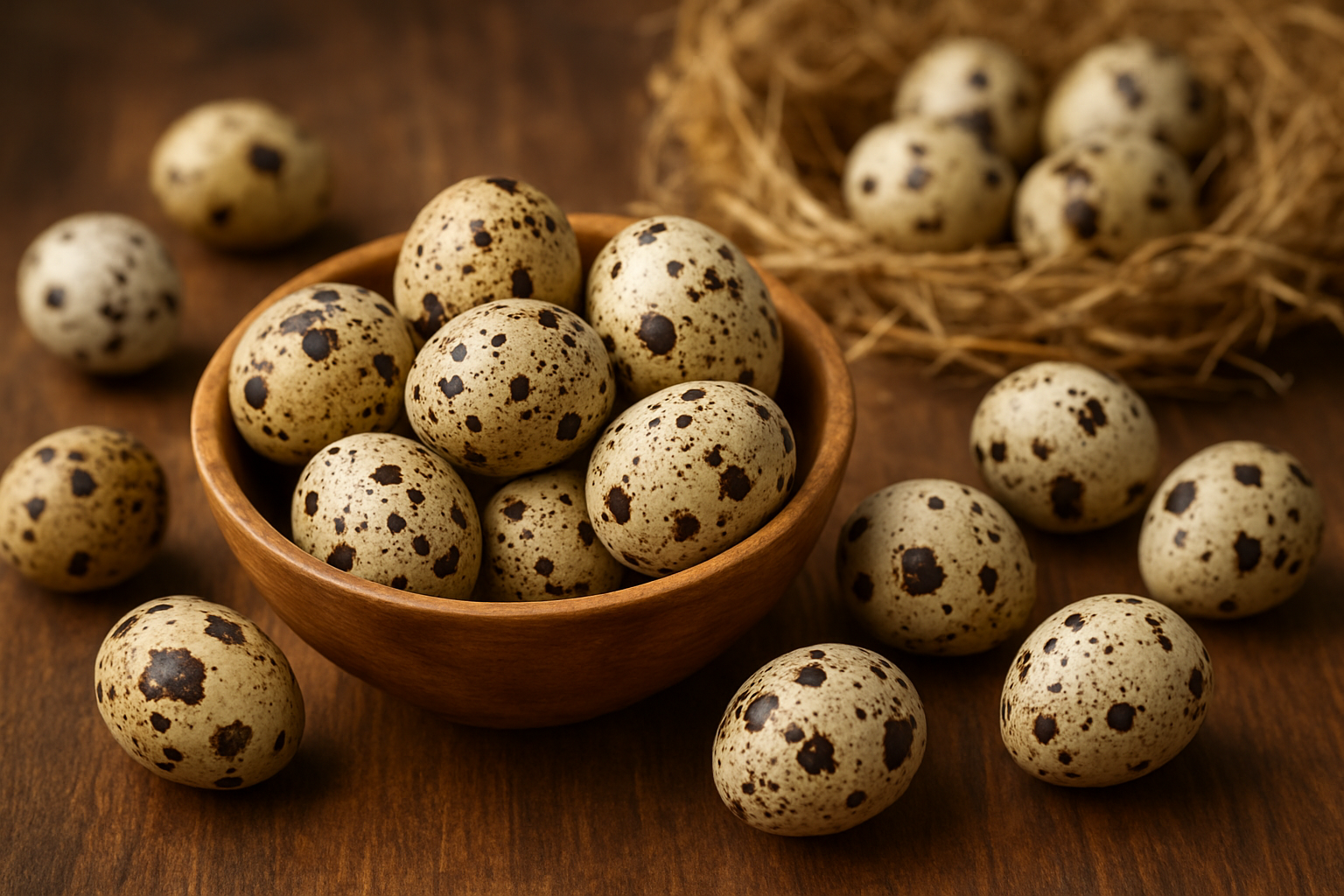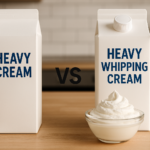Wachteleier or quail eggs in English are small, speckled eggs laid by quails. Despite their diminutive size, they’re catching attention in kitchens and health circles for their rich nutrition and unique flavor. In recent years, people have become more curious about Wachteleier thanks to their reputation as a “superfood,” their gourmet potential, and claims about health benefits.
In this article, we’ll explore what Wachteleier are, what makes them special compared to chicken eggs, their nutritional value, health benefits, cooking ideas, safe buying and storage, risks to keep in mind, and the ethical side of producing them. By the end, you’ll have a solid understanding of Wachteleier and how to include them in your lifestyle — if you choose to.
Understanding Wachteleier and Their Unique Qualities
Wachteleier come from quails, small birds that have been domesticated in many parts of the world. Historically, quail eggs have been used in various cuisines, especially in Asia, Europe, and parts of South America. Their use dates back centuries, often valued for flavor, size, and availability in certain regions.
Compared to regular chicken eggs, Wachteleier are much smaller. Their shells tend to be speckled and thicker relative to their size, which can make them more durable during transport. Inside, they often contain a relatively larger yolk in proportion to the white, which affects their texture and richness. In taste, many people find quail eggs creamier and more intense than chicken eggs, though the difference isn’t dramatic.
Culturally, Wachteleier hold special places in different kitchens. In Japan and Korea, for example, they’re used raw or cooked in traditional dishes. In parts of Europe, they might appear in small appetizers, salads, or gourmet preparations. Their unique look and flavor make them popular for special occasions and high-end cooking.
Nutritional Value of Wachteleier
Wachteleier pack a surprising nutritional punch for their size. They are high in protein, healthy fats, essential vitamins, and minerals. According to nutrition databases, quail eggs provide more of certain nutrients per weight than chicken eggs. For example, they tend to have more riboflavin (vitamin B2), iron, and vitamin B12, while calories remain comparable when adjusted for size.
Protein in Wachteleier is complete, meaning it contains essential amino acids needed by the body. They also offer good amounts of B-vitamins (important for energy metabolism), vitamin A (for vision and immune health), and minerals like iron, phosphorus, selenium, and zinc.
When compared directly with chicken eggs, Wachteleier often win in several categories, especially for nutrient density. However, because they are smaller, you need more of them to match the volume of a chicken egg in recipes, which raises cost and preparation complexity.
Due to this mix of nutrients, many nutrition experts consider Wachteleier a nutrient-dense food. That means you get a lot of “good stuff” relative to their size or calorie content.
Health Benefits Linked to Wachteleier
Because Wachteleier are rich in vitamins, minerals, protein, and healthy fats, they may offer several health advantages. One potential benefit is supporting the immune system. The combination of antioxidants, B-vitamins, and minerals helps the body respond to stress, fight infections, and maintain general health.
They may also contribute to energy and vitality. The protein supports muscle repair and growth, while B-vitamins help convert food into energy, making Wachteleier helpful for people who need sustained energy.
Wachteleier are sometimes linked to benefits for skin, hair, and eye health. Vitamin A, iron, and essential fatty acids play roles in maintaining healthy vision, skin regeneration, and cellular function.
There are also many myths surrounding Wachteleier. For example, some claim they cure allergies or boost virility. While preliminary studies show promising antioxidant and anti-inflammatory properties (e.g. reducing allergy symptoms in limited human studies), the evidence is still incomplete and more research is needed.
In short: Wachteleier can be a healthy part of a balanced diet, but they are not miracle cures.
How to Use Wachteleier in Everyday Cooking?
Wachteleier are quite versatile and can be used much like chicken eggs, with a few differences due to size and shell thickness. They make excellent additions to breakfast dishes, salads, appetizers, and gourmet recipes. Because they are small, they often serve as elegant toppings or garnishes in fine dining.
When boiling, they take less time than chicken eggs — typically just a few minutes for hard or soft boil. Peeling can be more delicate, owing to the shell structure (but the shell is more robust in some ways). Frying and baking are also possible, but cooking times and heat levels may need adjustment.
Some creative recipe ideas: you can hard-boil them and serve them on deviled egg style hors d’oeuvres, add them to salads for extra protein, use them in sushi, or even pickle them as a snack. Their size and appearance make them ideal for decorative plates or small delicate preparations.
Buying and Storing Wachteleier Safely
If you’re buying Wachteleier, look for clean, uncracked shells and consistent speckling (which often signals freshness and quality). Local farms or specialized grocers often offer fresher eggs than mass-produced ones. Preference for organic, free-range, or regionally produced eggs can improve quality and ethical standards.
Proper storage is essential. Store Wachteleier in a cool, consistent environment, ideally in the refrigerator. Keep them in their original carton or cover them lightly to protect from damage. Refrigeration helps maintain freshness and slows spoilage.
Wachteleier don’t last forever. When boiled, they typically keep for several days in the refrigerator; raw ones will spoil faster. Signs they’ve gone bad include off odors, discoloration, unusual texture, or damaged shells. Use common sense and sensory cues to judge freshness.
Possible Risks and Considerations
Even though Wachteleier are nutritious, there are risks to keep in mind. Allergies: if you are allergic to chicken eggs, you may also react to quail eggs. Always proceed with caution and consult a healthcare professional if unsure.
Consuming them raw or undercooked can pose risks due to bacteria like Salmonella. This is especially a concern for pregnant women, children, and people with weakened immune systems. Cooking quail eggs thoroughly is important when safety is a priority.
Because they tend to be rich in cholesterol and fats, moderation is key. Even though dietary cholesterol’s impact is less concerning than once thought, it’s still wise to balance Wachteleier with other foods, especially for people managing heart health or high cholesterol.
Sustainability and Ethical Aspects of Wachteleier Production
Quail farming differs from chicken egg production in several ways. Quails require less space and feed per bird, but also often lay fewer eggs in total. The environmental footprint can be smaller, but it depends heavily on farming practices.
Ethical and environmental factors matter, such as the living conditions, diet, and treatment of the birds. Farms that raise quails in free-range or organic systems often have better standards for animal welfare and environmental impact. Choosing locally sourced or certified organic Wachteleier can support more sustainable practices.
Consumers may weigh these considerations when deciding where and how they buy Wachteleier. Supporting responsible farms helps ensure ethical production and can often result in fresher, higher-quality eggs.
Conclusion
Wachteleier, or quail eggs, are increasingly popular not just for their unique taste and visual appeal, but also for their rich nutritional profile. Though small, they pack substantial vitamins, minerals, and protein, giving them a reputation as a “superfood.”
Used wisely, these eggs can enhance a balanced diet, offer culinary creativity, and contribute to healthy eating patterns. That said, it’s important to consider safety, moderation, and sourcing ethics.
If you’re curious, trying Wachteleier in simple recipes is a good way to experience both their flavor and benefits. With respect for quality, safety, and sustainability, they can be a valuable addition to your kitchen and lifestyle.
My name is Mustafa, and I have been blogging for over 5 years. I am passionate about sharing complete, accurate, and helpful information with my readers. Along with managing content on The Matcha Read, I also contribute blog posts to premium websites. My goal is to provide valuable insights in a clear and easy-to-understand way, so every reader walks away with useful knowledge.










